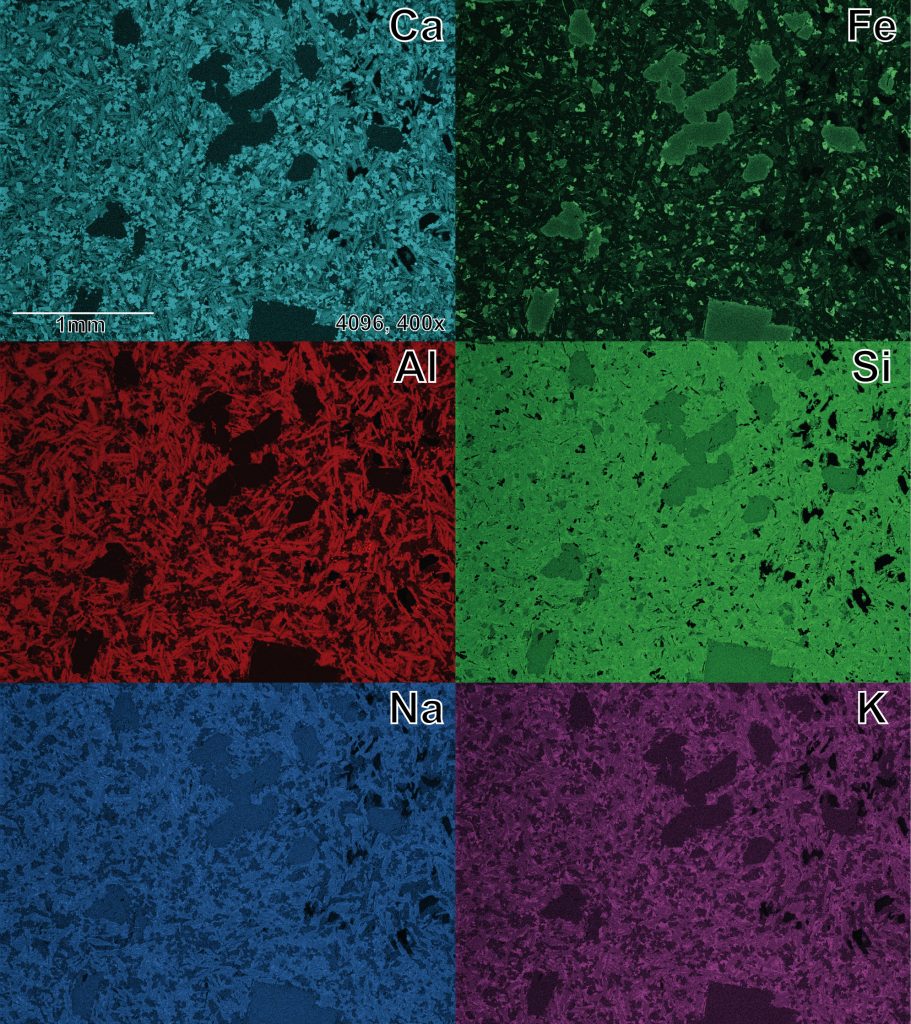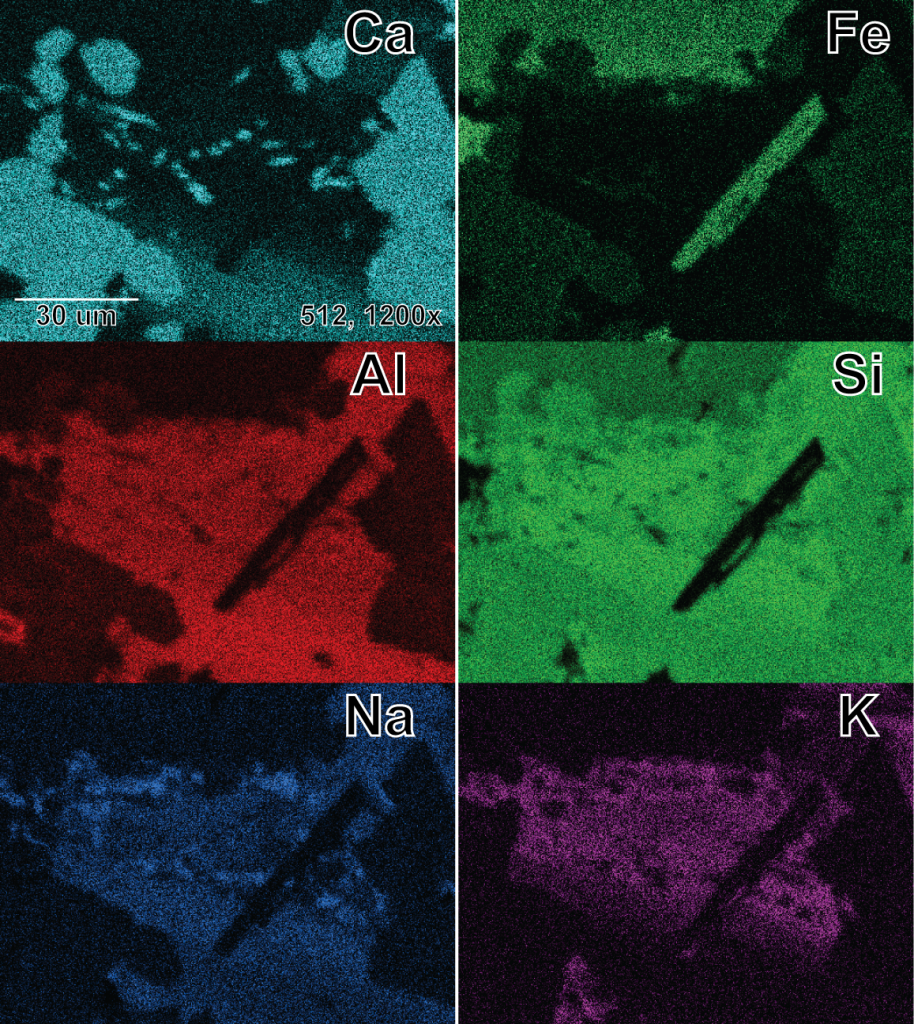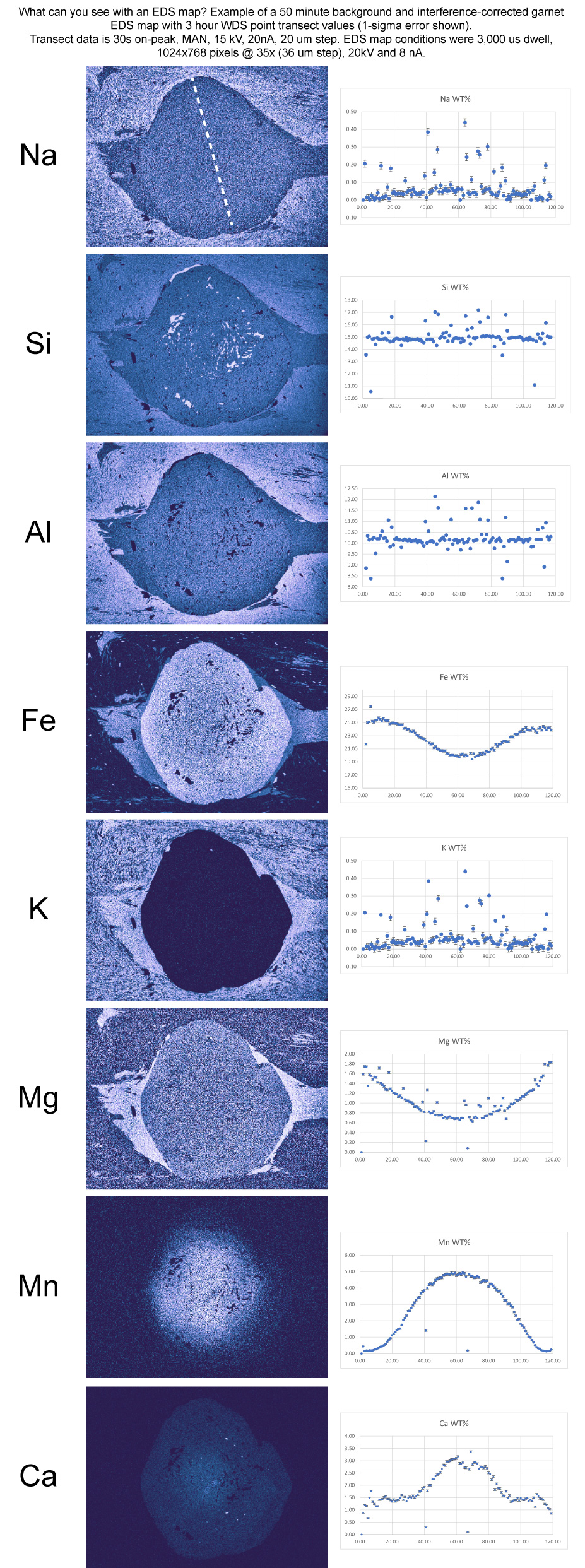SEM Technique: EDS mapping
Energy dispersive spectrometry (EDS) is an X-ray characterization technique that allows extremely rapid elemental concentrations to be gathered. Elemental concentrations can be collected from points, along lines, or as maps. Our JEOL 6490 is equipped with an Oxford Instruments X-max 50mm2 detector, operated through the Aztec software. On our instrument, EDS can be collected at the sub-micron scale (lower kV allows for smaller spot sizes, but loses the ability to resolve higher-Z elements) over areas as large as cm2. All maps can be corrected for background contribution and interfering X-ray lines (TruMap).


